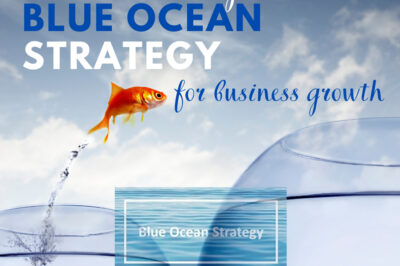In a marketplace teeming with competition, the Blue Ocean Strategy offers businesses a way to find uncharted waters away from the fierce rivalry that defines saturated markets. Pioneered by W. Chan Kim and Renée Mauborgne, this strategic approach encourages companies to create new demand in an uncontested market space, or “Blue Ocean,” rather than battling competitors over shrinking profits in a “Red Ocean.” As more companies adopt this strategy in hopes of capturing new growth and opportunities, one has to wonder: Is the Blue Ocean Strategy a sustainable business model for the future, or is it just a temporary escape from traditional market challenges?
Exploring the Blue Ocean Strategy:
The core idea behind the Blue Ocean Strategy is for businesses to stop competing in overcrowded markets and start creating new markets themselves. This involves innovating in ways that turn non-customers into customers, rather than stealing customers from competitors. By offering something unique, companies can make competition irrelevant and operate in a market with no rivals at least for a time.
Benefits and Success Stories:
Companies like Cirque du Soleil and Apple have successfully implemented Blue Ocean strategies to capture new growth and create markets that didn’t previously exist. Cirque du Soleil redefined the circus industry by combining opera, dance, and acrobatics, thus reaching a completely new group of customers. Apple, through products like the iPhone, created an entirely new market space that integrated phone, internet, and music capabilities into one device, dramatically changing the tech landscape.
Challenges and Limitations:
While the Blue Ocean Strategy can lead to substantial rewards, it also comes with risks. The process of exploring and developing new markets is costly and uncertain. There’s no guarantee that the demand for a new innovation will be as expected, and early failures can be detrimental. Additionally, once a blue ocean is created, it can attract competitors, turning it into a red ocean over time.
Conclusion:
The Blue Ocean Strategy remains a compelling approach for businesses looking to innovate and grow. However, its success depends heavily on a company’s ability to think creatively and its willingness to take calculated risks. As industries continue to evolve and new technologies arise, the relevance and implementation of the Blue Ocean Strategy may well determine the future landscape of global business. What’s your take on adopting this strategy in today’s economic climate? Will it lead to sustainable growth or are its risks too great?










































































Leave a Reply